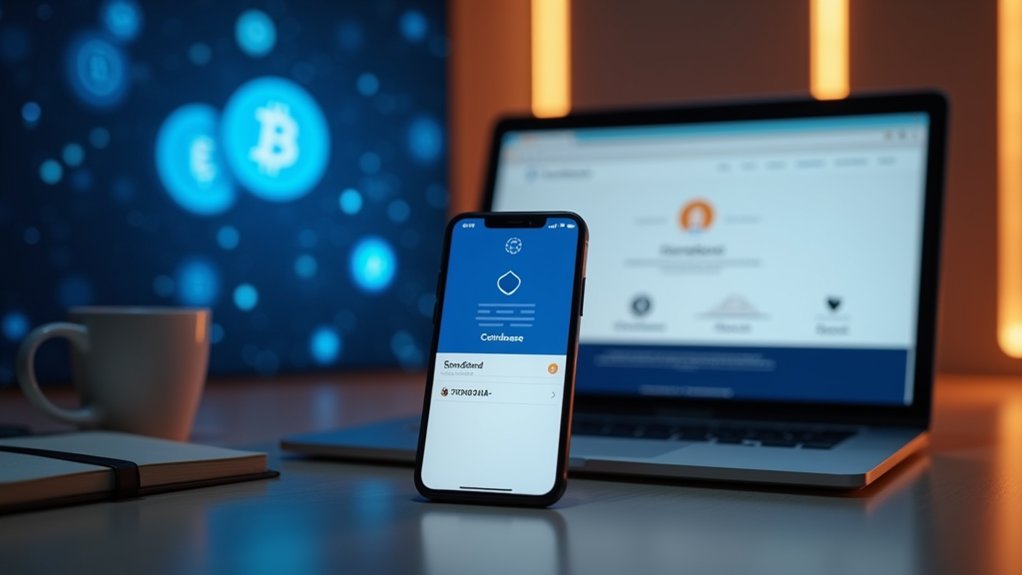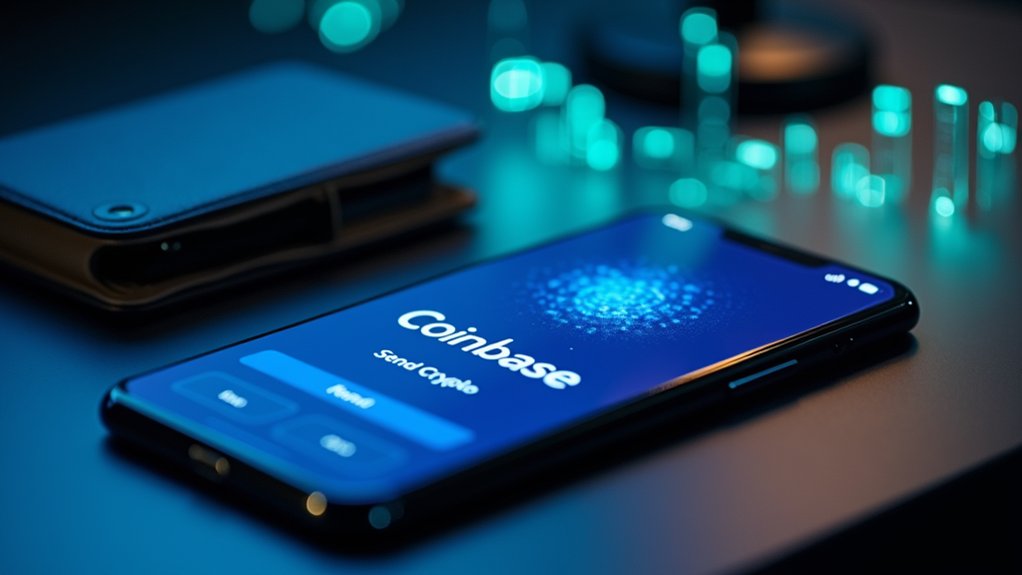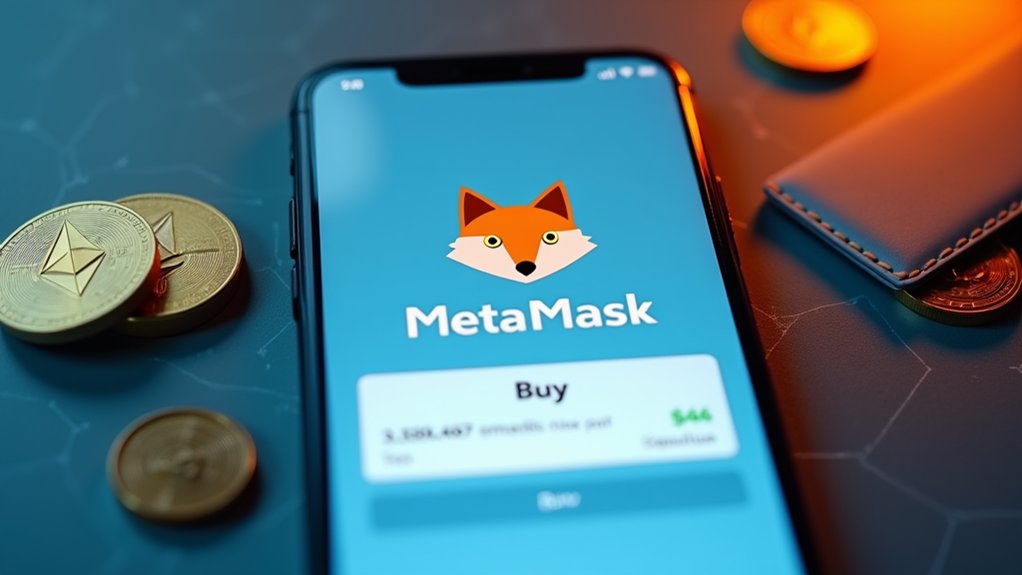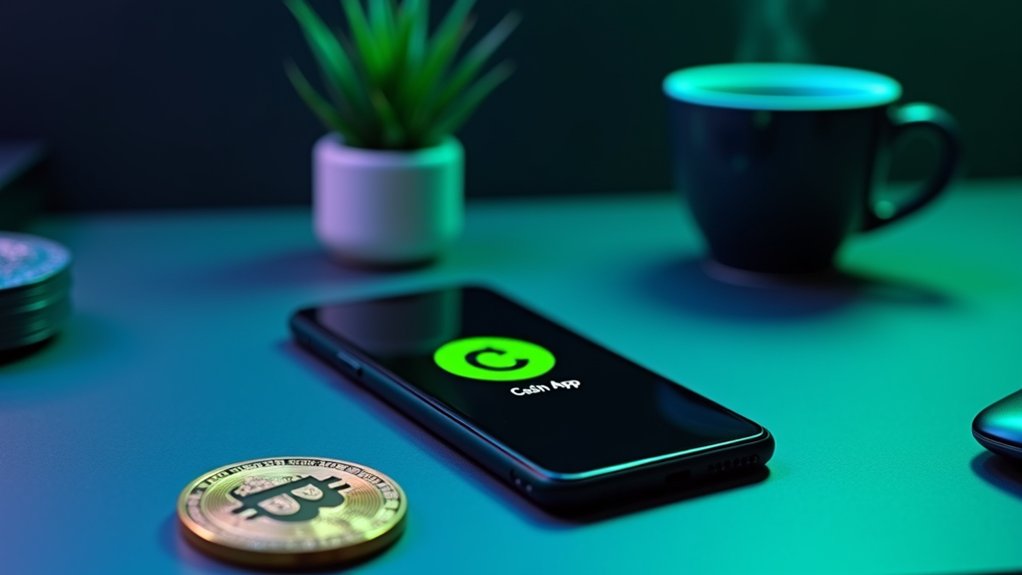To send crypto from Coinbase, users first select "Send" from the dashboard or mobile menu, then choose the desired cryptocurrency and amount. Recipients can be specified via wallet address, email, or QR code, while ensuring network compatibility for external transfers. Off-chain transfers between Coinbase users occur instantly without fees, whereas on-chain transactions to external wallets incur blockchain fees and confirmation times. Proper verification of addresses and network selection prevents irreversible transaction errors.

Transferring cryptocurrency from Coinbase requires careful attention to detail, since the process involves several vital steps that vary depending on whether the transaction occurs on-chain or off-chain. On-chain sends transfer assets between external wallets and incur blockchain fees plus processing time, while off-chain transfers happen instantly between Coinbase users via email or phone number with no fees. The distinction is essential for users managing transaction costs and timing expectations, particularly when network congestion affects confirmation times.
The sending process differs slightly between mobile and web platforms, though both require similar information. On mobile, users initiate transfers by tapping Menu followed by Send, selecting their desired cryptocurrency and amount, then entering recipient details either through wallet address, QR code, or Coinbase user information. When sending maximum amounts, users should always verify sufficient balance to avoid transaction errors.
Whether on mobile or web, Coinbase's sending process follows a consistent workflow of selecting assets and specifying recipient details.
The web platform workflow follows comparable steps, beginning at the Dashboard's Send crypto option, proceeding through asset selection, and concluding with recipient details and transaction preview.
Network selection represents a vital decision point when sending cryptocurrency externally, since the chosen network must align with the recipient wallet's compatibility requirements. Different cryptocurrencies utilize unique networks, requiring users to confirm compatibility before proceeding, while transfers between Coinbase users bypass this requirement entirely, functioning within the platform's internal system. Coinbase's special feature allows users to send various cryptocurrencies including Bitcoin Cash and popular altcoins to any email address across 100+ countries without fees.
Bitcoin transactions demand particular attention due to their unique address format, separate network requirements, and potentially higher fees resulting from network congestion. Users should note that larger Bitcoin transactions may require additional confirmations, extending completion timeframes. For any cryptocurrency transaction, it's critical to double-check addresses before confirming to prevent irreversible errors.
Security best practices include conducting test transfers with minimal amounts before substantial transactions, thoroughly verifying recipient addresses and networks, confirming available balances before selecting maximum transfer amounts, and enabling two-factor authentication.
The irrevocable nature of blockchain transactions makes these precautions essential, since funds sent to incorrect addresses or incompatible networks cannot be retrieved, representing a permanent loss to the sender.
Frequently Asked Questions
Is There a Minimum Amount Required for Sending Crypto?
Minimum sending requirements for cryptocurrencies vary depending on multiple factors, including the user's geographic location, verification status, and the specific digital asset being transferred.
For instance, Bitcoin's minimum threshold may approximate 0.0001 BTC, which fluctuates in fiat value according to market conditions. On-chain transfers necessitate additional network fees that effectively increase minimum send amounts, while off-chain transfers between platform users typically permit any amount without fees or established minimums.
How Long Do Crypto Transfers From Coinbase Typically Take?
Crypto transfers from Coinbase vary greatly in duration based on transaction type.
Off-chain transfers between Coinbase users occur instantaneously without fees, whereas on-chain transactions to external wallets typically require approximately 30 minutes for blockchain processing, plus applicable network fees.
International transfers encounter additional variables, with SEPA transfers requiring 2-3 business days, GBP transfers completing within one business day, and Interac transfers generally processing within 5 minutes, barring network congestion.
Can I Cancel a Crypto Transaction After Sending It?
Cryptocurrency transactions cannot be canceled once confirmed on the blockchain, owing to its immutable, decentralized nature.
For pending transactions, limited intervention options exist, including Replace-by-Fee (RBF) for Bitcoin or nonce manipulation for Ethereum.
Users should verify recipient details thoroughly, utilize contact lists for repeated transfers, and consider transaction fee planning to mitigate errors.
Coinbase specifically offers no built-in cancellation mechanism for on-chain transfers, though internal platform transfers may afford greater flexibility.
Does Coinbase Offer Lower Fees During Certain Times?
Coinbase does not offer time-based fee discounts on its platform.
While blockchain network fees fluctuate based on congestion levels, which may coincidentally be lower during certain periods, these variations are not scheduled or guaranteed.
The exchange's fee structure primarily depends on trading volume tiers, account type (standard vs. Advanced Trade), and transaction methods.
Users seeking lower fees should consider Coinbase One subscription, off-chain transfers to other users, or utilizing the Lightning Network for Bitcoin transactions.
What Happens if I Send Crypto to an Incorrect Address?
Sending cryptocurrency to an incorrect address typically results in permanent loss of funds, since blockchain transactions are irreversible.
The outcome depends on several factors: funds sent to active wallets might be retrievable through recipient cooperation, while those sent to burn addresses are permanently inaccessible.
Network confusion can result in trapped assets, particularly between EVM-compatible chains that share address structures.
Though compatible networks occasionally offer recovery options through cross-chain tools or exchange assistance.









